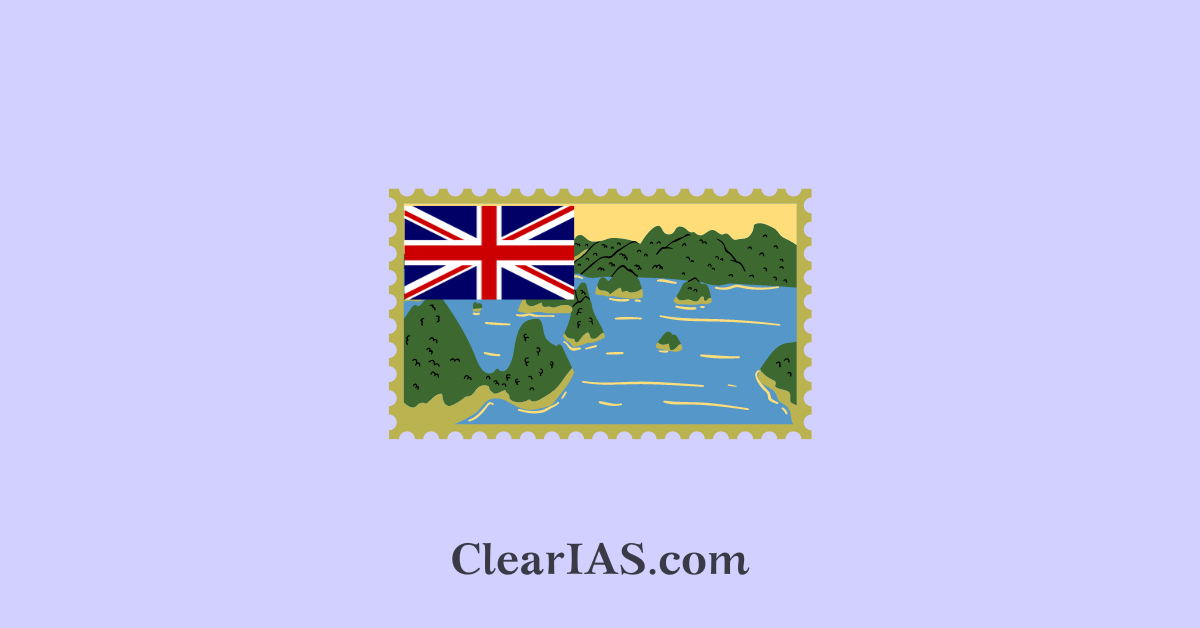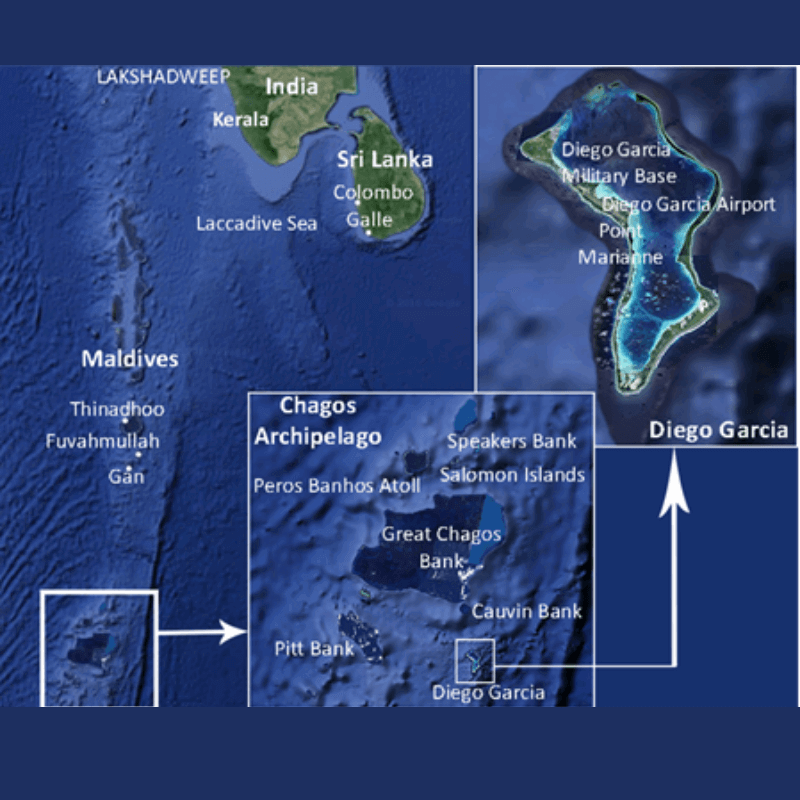
The Chagos Archipelago has a complex and contested history, largely shaped by colonialism, geopolitics, and human rights issues. Located in the Indian Ocean, the archipelago is part of the British Indian Ocean Territory (BIOT), but it has been the subject of disputes between the UK, Mauritius, and the displaced Chagossian people. Read here to learn about the latest developments in the issue.
Britain said it would cede sovereignty of the Chagos Islands to Mauritius in a deal that secured the future of the UK-U.S. Diego Garcia military base, which could also pave the way for people displaced decades ago to return home.
The decision has aroused mixed reactions globally- critics in Britain said it was a capitulation that played into the hands of China, which has close trade ties with Mauritius. One group representing displaced Chagos Islanders expressed anger they had been shut out of talks.
Britain, which has controlled the region since 1814, detached the Chagos Islands in 1965 from Mauritius – a former colony that became independent three years later – to create the British Indian Ocean Territory.
History of the Chagos Archipelago
Early History:
- Discovery and Settlement: The Chagos Islands were discovered by European explorers in the 16th century. Initially uninhabited, the islands were settled by enslaved Africans and labourers brought by the French, who controlled the region in the 18th century. Later, the British took over the islands during the Napoleonic Wars.
- Colonial Era: In the early colonial period, the islands were used for plantations, primarily for coconut production.
British Control and Strategic Use:
- British Indian Ocean Territory (BIOT): In 1965, the UK separated the Chagos Archipelago from Mauritius to create BIOT, including islands from the Seychelles. This separation happened just before Mauritius gained independence in 1968. The UK retained control of the islands for strategic purposes, especially due to growing tensions during the Cold War.
- Diego Garcia: The largest island, Diego Garcia, became geopolitically significant when the UK leased it to the United States in 1966 to establish a military base. The base has been used for military operations in the Middle East, Afghanistan, and during the Cold War.
Forced Displacement and Legal Battles:
- Chagossian Expulsion: Between 1968 and 1973, the UK forcibly removed around 1,500–2,000 Chagossians, the indigenous inhabitants of the archipelago, to make way for the military base on Diego Garcia. These people were relocated primarily to Mauritius and the Seychelles, often in impoverished conditions. Their displacement has been the centre of legal and political controversies for decades.
- Chagossian Fight for Right of Return: The Chagossians have been fighting for the right to return to their homeland since their removal. Multiple legal challenges have been brought in both British and international courts. In some cases, British courts ruled in favour of the Chagossians, but the British government has repeatedly appealed or blocked the rulings, citing security reasons related to the military base.
Why was the Chagos archipelago significant for the West?

The creation of the British Indian Ocean Territory (BIOT) in November 1965 was a significant geopolitical move by the UK during the decolonization period. At a time when Britain was granting independence to many of its colonies, the formation of BIOT stood out as a contrasting event.
This new territory included seven atolls of the Chagos Archipelago (formerly part of Mauritius) and the islands of Aldabra, Desroches, and Farquhar, which were later transferred to the Seychelles upon its independence in 1976.
- Decolonization Era: During the 1960s, many of Britain’s colonies, particularly in Africa and Asia, gained independence. However, Britain maintained control of the Chagos Archipelago by separating it from Mauritius in 1965, shortly before Mauritius’ independence in 1968. This act allowed the UK to retain a strategic military foothold in the Indian Ocean.
- Cold War Tensions: The creation of BIOT was driven by Cold War dynamics. The US and the UK were keen to counter the growing Soviet influence in the region. This led to the leasing of Diego Garcia, the largest island in the Chagos Archipelago, to the US for a military base, which remains a critical asset for US military operations in the Middle East and beyond.
- British Withdrawal East of Suez: The British government’s decision to reduce its military presence “east of the Suez” in 1968 was a pivotal moment in its strategic realignment. As Britain sought to scale back its military commitments, retaining Diego Garcia became essential for maintaining influence in the Indian Ocean without directly involving British forces.
- Economic Struggles: Britain was grappling with economic difficulties during this period, including the 1967 devaluation of the pound. Maintaining Diego Garcia for the US provided an economic and strategic opportunity, as the lease allowed the UK to secure its interests in the region with American backing.
International Disputes over the Chagos Archipelago
- Mauritius’ Claim: Mauritius has consistently claimed that the Chagos Archipelago is part of its territory and that the UK’s separation of the islands was illegal.
- In 2019, the International Court of Justice (ICJ) ruled in an advisory opinion that the UK’s continued control of the Chagos Islands was unlawful and that the archipelago should be returned to Mauritius.
- The United Nations General Assembly passed a resolution the same year, urging the UK to relinquish control.
- UK’s Position: Despite the ICJ ruling and international pressure, the UK has maintained that it will retain control of the islands for defence purposes, although it has promised to eventually return the islands to Mauritius once they are no longer needed for security reasons.
- In 2016, Britain’s Foreign Ministry extended Diego Garcia’s lease until 2036 and declared the expelled islanders would not be allowed to go back.
Modern Issues
- Military Base: The US military base on Diego Garcia remains critical to the island’s geopolitical significance. It has been used in several key military operations, including the Gulf War and the War in Afghanistan.
- Environmental and Human Rights: The Chagos Archipelago has also been at the centre of debates about environmental preservation, with some arguing that the military base has caused ecological damage. Additionally, the rights of the displaced Chagossians continue to be a key human rights issue.
Current Status of the Chagos Archipelago
2024: The UK government has announced that it will transfer sovereignty of a remote cluster of islands in the Indian Ocean to Mauritius. The final treaty outlining the transfer of the Chagos Islands, where there is a significant US military base, is expected to be announced in the coming months.
Negotiations for this transfer began in 2022 under the UK’s then-foreign secretary, James Cleverly, but were paused the following year by his successor, David Cameron.
Reaction to the decision by the UK to cede Chagos
- Chagossians are concerned that they, as the Indigenous people forcibly removed from the islands to make way for the military base between 1967 and 1973, have not been included in the negotiations.
- Others view the move as a betrayal of British interests. Mauritius is a country that maintains close ties with China, so critics argue this transfer could open the door to increased Chinese influence in the Indian Ocean.
Conclusion
The history of the Chagos Archipelago reflects the complexities of decolonization, geopolitical strategy, and human rights in the modern world.
The Chagos Archipelago remains a point of international contention, with Mauritius continuing to assert its claim and the Chagossians fighting for their right to return.
Till 2023, the UK’s refusal to cede control had left the islands as the last colonial outpost in Africa, a remnant of British imperialism and a symbol of ongoing geopolitical and human rights struggles.
Frequently Asked Questions (FAQs)
Q. Which country does the Chagos Islands belong to?
Ans: In a joint statement on 3 October 2024, both countries announced that the Chagos Archipelago would be recognised as part of Mauritius – with one condition: the UK and United States (US) maintain their military presence on the largest island, Diego Garcia.
Q. What is the religion of the Chagossians?
Ans: Chagossians are a Creole people of African origin and are mainly of Roman Catholic faith. They have a unique culture and language, Chagossian Kreol.
Related articles:
-Article by Swathi Satish






Leave a Reply